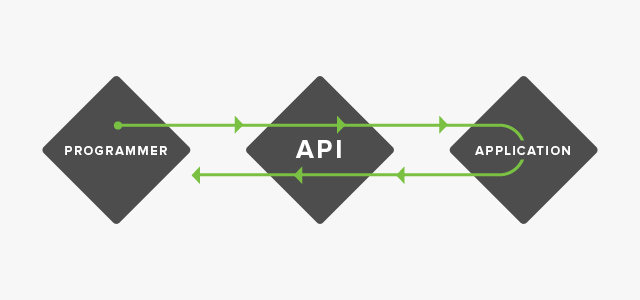What is an API?
API is a computer programming expression. An application programming interface (API) is a set of protocols, routines, and tools for designing software applications. It is a precise specification written by providers of a service followed by programmers when using that service. It describes available functionalities, accepted formats and the way it must be used. By now, the term API is used to describe both the service and the specification, e.g., the Facebook Graph API.
Every time a data is accessed in an application, the API is called. But there is only a certain amount of data accessed, so the communication to the operator is made in a specific language. It is unique to each application.
Imagine the concept with an API as the middleman between a programmer and an application. Requests are accepted by the middleman and data are returned. The middleman has also to inform programmers about everything they can request, how they can ask for it and receive it.

Basically a good API makes the development of a program easier by providing all the building blocks and a programmer puts them all together. It can access databases, computer hardware such as video cars or hard disk drives, and also ease the work of programming GUI components.
APIs come in the form of a library that includes specifications for data structures, routines, variables and object classes.
What is RESTful API?
Representational State Transfer (REST) is a software architectural structure used to build scalable web services. RESTful systems often communicate over the Hypertext Transfer Protocol with the same HTTP verbs (GET, POST, PUT, and DELETE) which web browsers use to retrieve data and to send them to remote servers. Constraints of the REST architectural style affect architectural properties such as performance, scalability, simplicity of interfaces, modifiability of components to meet changing needs, visibility of communication between components, reliability, and portability.
REST makes it easy for humans to understand what is being exchanged while allowing computers to communicate efficiently.
Requirements for a to design a good RESTful API
A good RESTful API should:
- Be simple, consistent, intuitive and pleasant
- Provide enough flexibility
- Use web standards
- Be friendly to developer and explorable via a browser address bar
- Be efficient while maintaining balance with the other requirements
An API represents a developer user interface and just like any other one, it is important to ensure the user’s experience.
To succeed in designing the best API for his app, a developer should:
- Use RESTful URLs and actions
- Use SSL everywhere
- Have great documentation
- Provide a way to limit which fields are returned from the API
- Not use response envelopes by default
- Paginate using Link headers
- Effectively use HTTP Status codes
Developers who design good APIs for their software and those who don’t, never have the same problems. Indeed they will always have less problems and will be well-organized. RESTful API are the base of any app. The developers of Razor Theory are aware and always follow the good instructions before building each app.